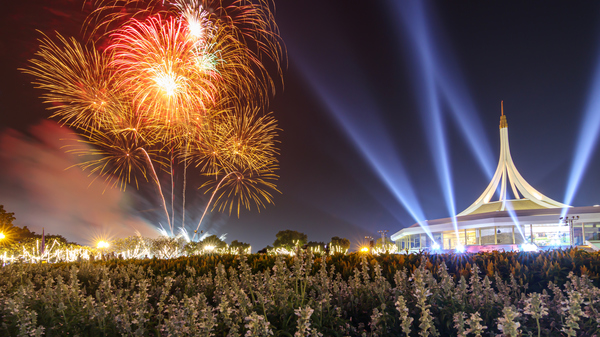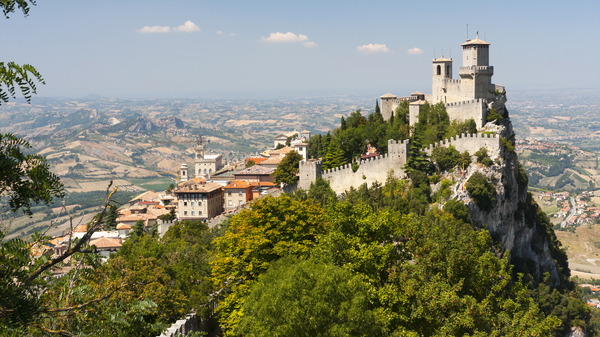Independence Day: Global Celebrations
A look at revolutions and celebrations around the world—including a nation that celebrates independence from the Roman Empire.

Enjoying fireworks in a park is a popular way to celebrate – here in Bangkok, Thailand.
© iStockphoto.com/Chaiwiwat Duangjinda
The most famous Independence Day might be the Fourth of July, celebrated in the United States. However, it is not the only one. More than 150 countries celebrate Independence Day around the globe.
Mexicans celebrate their independence on September 16 and Indians on August 15 – both with parades and celebrations not unlike the ones seen in the USA.
Independence lies at the root of most modern nations. Independence Days across the world are a testament to the indomitable spirit of nations and mark the culmination of historical struggles and the triumphs of people striving for self-governance.
From the birth of the United States to the unique celebrations in San Marino, each Independence Day offers a unique story to be celebrated and remembered.
A Worldwide Celebration
More than 150 countries celebrate their independence with a special day. Most mark it as a national holiday (or federal holiday) with fireworks, parades, and cultural events. Speeches and ceremonies remind people of their shared historyas a country, celebrating their achievements and sacrifices.
People often go out and enjoy food and drinks typical of their culture, like big barbecues and picnics in the United States.

At a BBQ or cookout, Americans like to serve food like burgers, ribs, and corn on the cob alongside sweet baked goods like cupcakes.
© iStockphoto.com/kali9
Historical Highlights: 200 Years of Independence
The majority of all 195 countries in the world today gained independence after the year 1800. Here are some highlights of Independence Day histories from the 18th century and onwards:
18th Century: The Beginning of American Nations
United States (July 4, 1776): The American Revolution led to the Declaration of Independence, marking the birth of the United States as an independent nation.
Haiti (January 1, 1804): The Haitian Revolution culminated in the establishment of the first independent state led by formerly enslaved people.
19th Century: Decolonization and National Self-Determination
Mexico (September 16, 1810): The Mexican War of Independence initiated a lengthy struggle resulting in the independence of Mexico from Spain.
Greece (March 25, 1821): Greece's War of Independence led to its liberation from the Ottoman Empire, restoring Greek sovereignty.
20th Century: A Wave of Independence Movements
India (August 15, 1947): The Indian Independence Movement led to the creation of India as an independent nation, free from British rule.
South Africa (April 27, 1994): The first post-apartheid elections marked the end of institutionalized racial segregation and the birth of a new South Africa, today celebrated as Freedom Day.
21st Century: Self-Governance in a Globalized World
Timor-Leste (May 20, 2002): After a long struggle, Timor-Leste (formerly East Timor) gained independence from Indonesia, becoming the first new sovereign state of the 21st century.
Revolutions Igniting Independence Movements
While numerous countries have celebrated their independence, a few nations played a significant role in sparking independence movements globally. The following countries have inspired multiple nations to seek independence:
- United States: The American Revolution, with its ideals of liberty and self-determination, became a beacon for many subsequent independence movements.
- France: The French Revolution not only transformed France but also ignited aspirations for freedom and independence across Europe and beyond.
- India: Mahatma Gandhi's nonviolent strugglefor Indian independence inspired movements worldwide, particularly in Africa.
Interesting Independence Celebrations Beyond the Norm

San Marino is the world’s oldest surviving republic. Pictured here is the old fortress on Monte Titano.
© iStockphoto.com/LUke1138
Independence Days are not confined to traditional notions. One such example is San Marino: The small landlocked country of San Marino, nestled within Italy, celebrates its independence on September 3rd each year as “Republic Day.”
Recognized as the world's oldest surviving republic, San Marino has maintained its sovereignty since 301CE when it became independent from the Roman Empire—yes, that is how old San Marino really is.
To be fair: It started as a few houses on a hill and hasn’t grown that much in 1,700 years. But it is beautiful and independent.